Thomas Butler
Efficiently predicting high resolution mass spectra with graph neural networks
Jan 26, 2023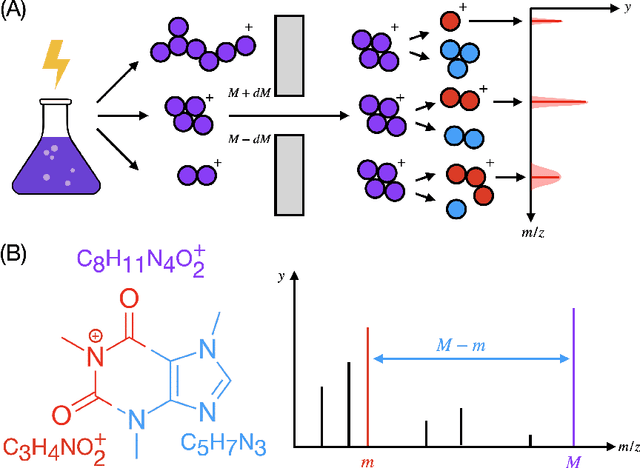

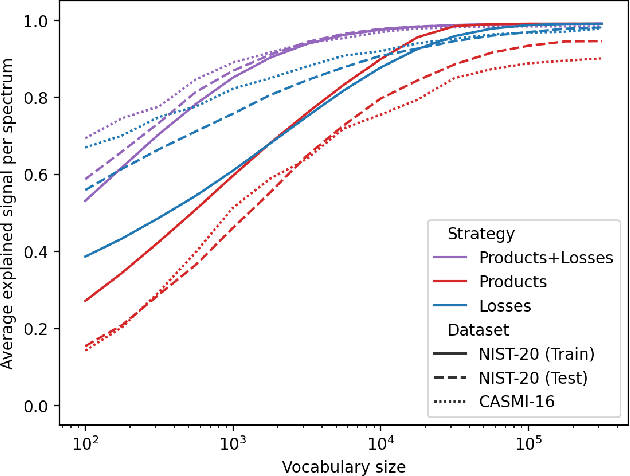

Abstract:Identifying a small molecule from its mass spectrum is the primary open problem in computational metabolomics. This is typically cast as information retrieval: an unknown spectrum is matched against spectra predicted computationally from a large database of chemical structures. However, current approaches to spectrum prediction model the output space in ways that force a tradeoff between capturing high resolution mass information and tractable learning. We resolve this tradeoff by casting spectrum prediction as a mapping from an input molecular graph to a probability distribution over molecular formulas. We discover that a large corpus of mass spectra can be closely approximated using a fixed vocabulary constituting only 2% of all observed formulas. This enables efficient spectrum prediction using an architecture similar to graph classification - GrAFF-MS - achieving significantly lower prediction error and orders-of-magnitude faster runtime than state-of-the-art methods.
Multi-scale Sinusoidal Embeddings Enable Learning on High Resolution Mass Spectrometry Data
Jul 06, 2022
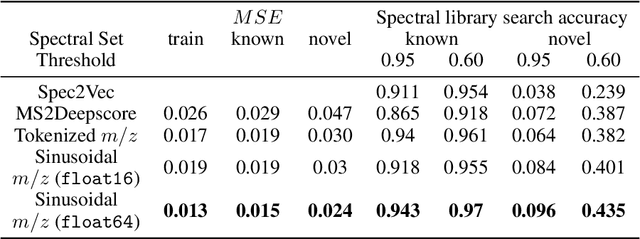
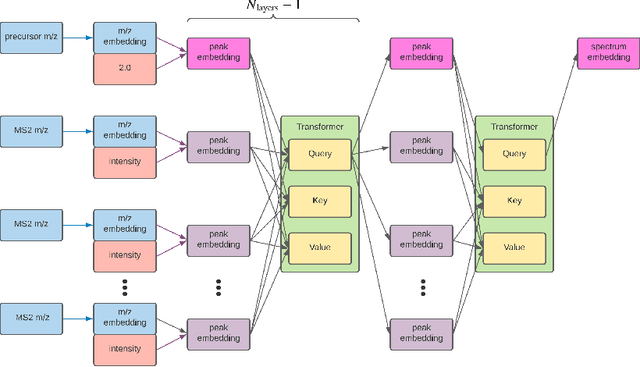
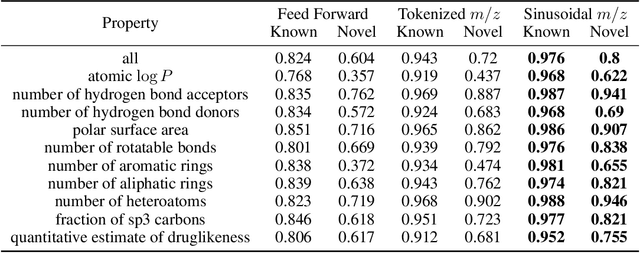
Abstract:Small molecules in biological samples are studied to provide information about disease states, environmental toxins, natural product drug discovery, and many other applications. The primary window into the composition of small molecule mixtures is tandem mass spectrometry (MS2), which produces data that are of high sensitivity and part per million resolution. We adopt multi-scale sinusoidal embeddings of the mass data in MS2 designed to meet the challenge of learning from the full resolution of MS2 data. Using these embeddings, we provide a new state of the art model for spectral library search, the standard task for initial evaluation of MS2 data. We also introduce a new task, chemical property prediction from MS2 data, that has natural applications in high-throughput MS2 experiments and show that an average $R^2$ of 80\% for novel compounds can be achieved across 10 chemical properties prioritized by medicinal chemists. We use dimensionality reduction techniques and experiments with different floating point resolutions to show the essential role multi-scale sinusoidal embeddings play in learning from MS2 data.
Hidden Biases in Unreliable News Detection Datasets
Apr 20, 2021



Abstract:Automatic unreliable news detection is a research problem with great potential impact. Recently, several papers have shown promising results on large-scale news datasets with models that only use the article itself without resorting to any fact-checking mechanism or retrieving any supporting evidence. In this work, we take a closer look at these datasets. While they all provide valuable resources for future research, we observe a number of problems that may lead to results that do not generalize in more realistic settings. Specifically, we show that selection bias during data collection leads to undesired artifacts in the datasets. In addition, while most systems train and predict at the level of individual articles, overlapping article sources in the training and evaluation data can provide a strong confounding factor that models can exploit. In the presence of this confounding factor, the models can achieve good performance by directly memorizing the site-label mapping instead of modeling the real task of unreliable news detection. We observed a significant drop (>10%) in accuracy for all models tested in a clean split with no train/test source overlap. Using the observations and experimental results, we provide practical suggestions on how to create more reliable datasets for the unreliable news detection task. We suggest future dataset creation include a simple model as a difficulty/bias probe and future model development use a clean non-overlapping site and date split.
 Add to Chrome
Add to Chrome Add to Firefox
Add to Firefox Add to Edge
Add to Edge